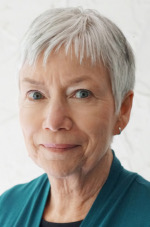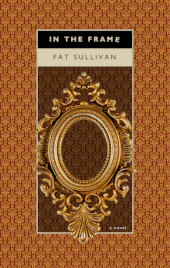The Porcupine's Quill
Celebrating forty years on the Main Street
of Erin Village, Wellington County
BOOKS IN PRINT
In the Frame by Pat Sullivan
When a conspicuously high-profile gala fundraiser goes hilariously awry, the long-suffering staff of a Toronto art gallery scramble to salvage the remnants of their flagging reputations.
It’s 1998, and the staff of the newly re-branded Toronto Art Gallery (TAG) are preparing for an important fundraiser. There’s Rachel, a burned-out program coordinator whose narcissistic boss has her contemplating an early defection from the gallery once and for all. Then there’s Arthur, a mild-mannered curator who struggles to find his confidence and balance his professional goals with the whimsical demands of a comely donor. Amanda, shaken by unexpected incursions into her own curatorial purview, battles to regain control. Presiding over all is the director, George, whose ambitious expansion plans for the gallery tempt him to dabble in morally questionable behaviour to placate a key patron.
When a scheduling conflict sees TAG committed to a camp for rambunctious children, a tour for art-loving naturists, and a gala for deep-pocketed philanthropists—all on the one calamitous night—egos and ambitions collide, and each member of the team must find a way to withstand the chaos, salvage their reputations, and chart a way forward.
In the Frame is a riotous workplace satire that toys with the machinations of a fictional Toronto gallery and reveals some awkward truths about the Canadian art world in the process.
Excerpt from book
...[Rachel] returned to the second floor and walked into the temporary exhibition called Gestes, the work of a female artist from Quebec. She saw that the guards had left the videos on for the evening: the swooping forms of dancers and other performers moved across the white walls, emitted by overhead digital projectors. The artist wanted the title of her show to reflect the contrast between her choreographed videos and the random movements of TAG visitors. Hence, she had placed cameras in three galleries—this one, the sculpture room down the hall, and one of the European rooms on the first floor—which fed into a computer and projector located at a large, street-level window near the entrance. The cameras ran during the gallery’s regular open hours, filming anyone who walked into those three areas. Passers-by might see a solitary security guard looking at his watch, then a bouncy school group, or chatting adults, as the projection alternated among the three spaces. Rachel knew the whole setup had placed challenging demands on TAG’s installation staff, but it had paid off, as she’d often seen people standing by that window, seemingly transfixed by the interior activity revealed on a large screen. When the gallery closed to the public each day, guards turned off the cameras, and she assumed they had done so tonight. She decided to check out the gala setup.
As she walked along the second-floor hallway, a tune wafted up from Littlewood Court, the location of the dinner. She walked down one arm of the grand wooden staircase and stopped on the landing where a bronze bust of Susannah Littlewood, the gallery’s founder, perched on a maroon and black-veined marble pedestal, presiding over the Court’s activities. Rachel wondered what Miss Littlewood would think of tonight’s event, as the gallery planned yet another expansion which would erase most of the remaining garden. She might be pleased to see what her generosity and her collection had reaped, even though her elegant home had all but disappeared in previous renovations. She might welcome the contributions of Toronto’s elite to help the gallery grow. Then Rachel remembered why she herself had to work tonight. What would a cultivated Edwardian lady think of a naturist tour and a kids’ sleepover? I hope Miss Littlewood’s descendants are broad-minded. Although if everything goes according to plan, they’ll never know what else is happening. The piano music drew her from contemplating the bust to looking at the Court.
Littlewood Court was a square, neo-Classical, two-storey space at the heart of the original gallery. White-painted stone piers and arches created a colonnade surrounding the marble floor. Along three sides, passageways led to the European rooms, designed in the same traditional style, with high ceilings and mouldings. At the second-storey level of the colonnade, a mezzanine embraced the Court on all four sides, allowing visitors to walk from the Canadian galleries to the opposite ones, or out to the second-floor hallway. Reaching from pier to pier under each arch, a trellis-like pattern of cast-iron vines formed railings as high as an adult’s chest, providing a safe barrier for those who wanted to gaze down on Littlewood Court.
Rachel descended the six steps from the landing to the central arch, emerging on a level three steps above the marble floor. She gasped. She’d always liked the Court’s day-to-day austere elegance, the rhythm of the arches, the outdoor light filtering through the peaked glass roof onto the gray-veined white marble and white piers. But tonight it was transformed.
Round tables, adorned with silvery-gray silky cloths over white linen and elaborate settings for eight people, filled the Court floor. Complex centrepieces of white roses and greenery sat in the middle of each table, surrounded by white votive candles, waiting to be lit. Already, with the twilight above and tiny lights twinkling through the huge floral displays on tables fronting every pier, the Court assumed a magical atmosphere. On the opposite side, the steps were covered by a temporary stage, where a pianist sat at one end, and a podium stood at the other. To Rachel’s surprise, eight dancers in pale-coloured leotards flitted off the stage and through the colonnade to the nearby elevator. Were they part of the gala? The scurrying special events staff looked too harried to ask.
[Continued in In the Frame...]
Pat Sullivan was born in London, U.K. and raised in Cornwall, Ontario. She studied English and Art History at York University and went on to pursue a master’s degree in Art History at Queen’s. She worked as an educator at the Art Gallery of Ontario in Toronto and at the Agnes Etherington Art Centre in Kingston before retiring in 2017. In the Frame is her first novel. She lives in Vancouver, British Columbia. (Image courtesy of Tamea Burd Photography.)
The Porcupine's Quill would like to acknowledge the support of the Ontario Arts Council and the Canada Council for the Arts for our publishing program. The financial support of the Government of Canada through the Canada Book Fund (CBF) is also gratefully acknowledged.




